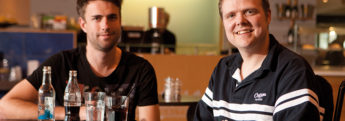Exploring the types and causes
Cerebral palsy does not refer to a particular illness or disease. It is actually a term used to describe a physical condition or motor disorder that results in muscle loss, restricted movement and loss of coordination and control.
The condition of cerebral palsy is caused by damage or injury to the brain, which is quite commonly accepted to happen during pregnancy when the brain is delicate and still developing. It can be quite severe or only a minor disruption, and depends on the level of the injury sustained to the developing brain.
There are several types cerebral palsy which are determined according to the part of the brain that has been damaged. The four types are grouped as athetoid cerebral palsy, ataxic cerebral palsy, spastic cerebral palsy and mixed cerebral palsy.
It’s important to note that not one person with cerebral palsy will exhibit the same symptoms as another.
What causes cerebral palsy?
Cerebral palsy is caused when the brain has not developed properly during the crucial stages of a baby’s growth, either within the womb, during labour or after being born.
However, the causes of cerebral palsy do vary and are not limited to one specific reason. It is very difficult to say in each person’s case what the exact cause has been.
Damage sustained in the womb
Around 80% of babies born with cerebral palsy are expected to have sustained this damage to the brain because of complications during foetal life within the womb.
During this stage, the baby – and more importantly their fragile brain – is still developing and growing.
The factors that may have caused the damage during pregnancy include:
- An abnormally formed part of the brain
- An infection contracted by the mother, such as toxoplasmosis or rubella
- Genetic problems
Complications during childbirth
Problems during labour or birth, possibly resulting in a temporary lack of oxygen, can be another cause of cerebral palsy.
Previously this was thought to be the common reason for developing the condition, but today’s medical research and statistics suggest that this is the cause of only 10% of cases.
Modern improvements in maternity care have drastically reduced the number of babies born with cerebral palsy as a result of birth trauma.
After birth
Those babies born prematurely or with a low birthweight carry a 50 times greater risk of having cerebral palsy (CP). Medical advancements improving their survival have slightly increased the number of CP cases resulting from this.
Another cause after childbirth is if the baby contracts an infection when they are very young, particularly meningitus or encephalitis.
Types of cerebral palsy
There are four main types of cerebral palsy. They are each determined by the area of the brain that has been damaged:
Athetoid cerebral palsy
Also known as dyskinetic cerebral palsy, this is when there is a loss of muscle control causing spontaneous involuntary or unwanted movements. It can also disrupt the control of the posture.
Spastic cerebral palsy
This is when there is body stiffness, posture tightness and weakness in the muscles.
Ataxic cerebral palsy
This is when there is shaky hand movements, loss of balance and coordination, and speech difficulty.
Mixed cerebral palsy
This is when people experience combinations of two – or more – of the types of cerebral palsy listed above.
Signs of cerebral palsy
The signs and symptoms of CP really depend on the type. They typically include abnormal physical features such as:
- Muscle stiffness or drawn in limbs
- Rigid limbs or an odd posture and loss of balance
- Incoordination of body muscles, e.g. mouth muscles creating difficulties with speech and feeding, or leg muscles causing mobility problems
- Sight and hearing
- Abnormal walking movements and limb paralysis
- Developmental delay in social skills and speech
Although as many as 30% of people with cerebral palsy also experience epilepsy, there is no known link.
Other commonly experienced problems may include rigid hand muscles that makes grasping objects difficult. This may mean that a person needs support in their adult life with writing, preparing meals, dressing, personal care and grooming.
How is cerebral palsy treated?
There is currently no known cure for cerebral palsy. Medical treatment to ease the affects of cerebral palsy is available but does depend on the type and severity of the condition.
Physical therapies
Early intervention is the key with rehabilitation and conducive education can be used to improve movement issues.
Physical therapies such as occupational therapy and physiotherapy are the most common and beneficial. They are used to ease symptoms, strengthen and relieve stiff muscles and prevent the condition from progressing. This can in turn help to reduce the impact of the condition and enable people to live independent lives by overcoming the difficulties in completing everyday tasks.
Language and speech
Language and speech therapies can be used to help develop a person’s speech patterns and social skills, as well as encouraging independent eating, swallowing and drinking.
Medication
Medication can be used to manage hyperactivity and spasticity of muscles, while surgery is required to correct physical deformities as a result of permanent muscle abnormality development.
Cerebral palsy care at home
People with cerebral palsy are able to live rich, full lives. It may involve participating in regular strengthening and physiotherapy exercises and they may need help to overcome physical barriers. Their abilities may be limited but their goals and dreams are still possible.
Cerebral palsy care may involve extra assistance and support with housekeeping, personal care, meal preparation, or just companionship and help with transport and mobility to enable getting out and enjoying your favourite interests and hobbies.
Other people are interested in...
We’re here seven days a week to talk through your home care needs and find the best option for you. Call 03300376958 or request a callback and we will call you.



Page reviewed by Deanna Lane, Senior Regional Clinical Lead on April 16, 2021
